-
About Florida KIDS COUNT
The objective of Florida KIDS COUNT (FKC) is to inform Floridians and their policy makers about the quality of life for Florida's children, and to build leadership and accountability for action on behalf of our children. FKC annually updates and disseminates national, statewide and county-level data on key indicators for Florida's children. Read More + -
Counting Florida Kids: 2020 Census
Florida is at great risk of undercounting its residents and stands to lose millions if we do not act to ensure a complete count of our residents. Read More + -
Florida KIDS COUNT Data Services
Florida KIDS COUNT is here to provide you with consistent and reliable data for you to adapt to a variety of uses including policy analysis, grant and proposal writing, needs assessments and public education. Read More + -
State and National Publications
Florida KIDS COUNT annually updates and disseminates national, statewide and county-level data on key indicators for Florida's children. Read More +
- 1
- 2
- 3
- 4
Data Snapshots
-
- 1
New from KIDS COUNT
- Counting for Kids Blog
- Florida KIDS COUNT
- National KIDS COUNT
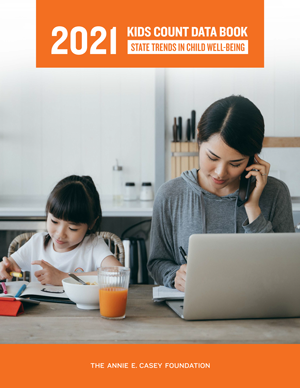 2021 KIDS COUNT® Data Book
2021 KIDS COUNT® Data Book
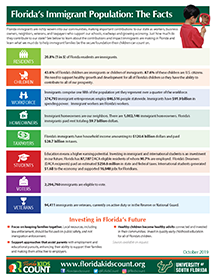
Florida's Immigrant Population: The Facts (English & Spanish)
Florida immigrants are richly woven into our communities, making important contributions to our state as workers, business owners, neighbors, veterans, and taxpayers who support our schools, roadways and growing economy. Learn more.
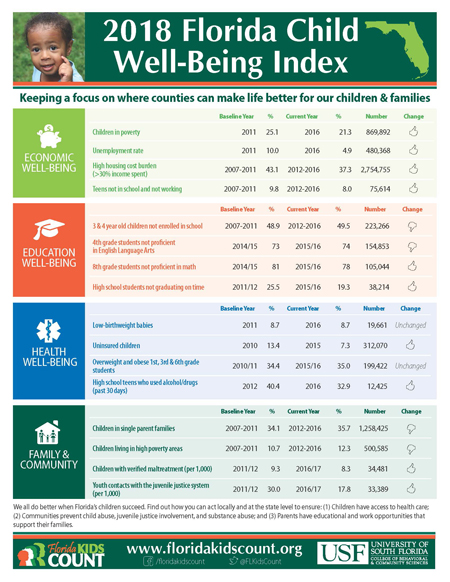
Florida Counties Child Well-Being Index Report (2019)
The 2019 Index emulates the annual ranking of states published by the Annie E. Casey Foundation that compares child well-being on 16 indicators in the areas of Economic Well-Being, Education, Health as well as Family and Community.
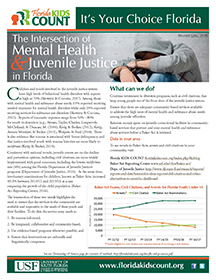
It's Your Choice Florida! The Intersection of Mental Health and Juvenile Justice in Florida
In Florida, involuntary examinations for children, known as Baker Acts, increased 49.3% between 2010/11 and 2016/16 at a rate outpacing the grown of the child population. Learn more.
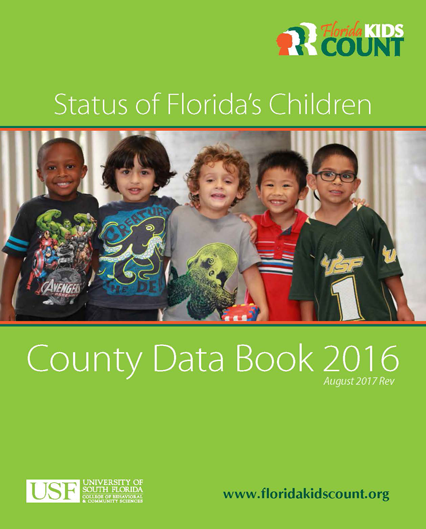
2016 Florida KIDS COUNT County Data Book
This county-by-county profile data-book provides information on how we can improve poverty levels, education and health outcomes in Florida, while reducing negative risk factors.

2021 KIDS COUNT® Data Book
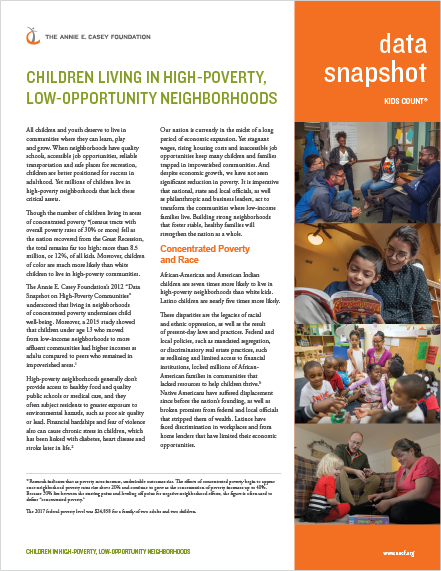
Children Living in High-Poverty, Low-Opportunity Neighborhoods
This latest snapshot from the Annie E. Casey Foundation shares the latest data — for the nation and each state — on children growing up in high-poverty areas. It also singles out two important factors, geographic location and race and ethnicity, that shape a child’s risk of living in concentrated poverty. The document ends by outlining recommended moves that leaders can take to help families in these communities thrive.
In this data snapshot, the Annie E. Casey Foundation examines how placements for young people in foster care have changed from 2007 to 2017. Using data from all 50 states and the District of Columbia, Casey finds that child welfare systems are doing a better job of placing kids in families. At the same time, racial disparities persist for kids of all ages and progress eludes teens in care.
Be an Advocate for Florida’s Children!
Take legislative action, join a campaign, or support Florida KIDS COUNT efforts.
Stay Connected!
Please sign up to Stay Connected! with the latest news and information for Florida KIDS COUNT. Your email will only be used to send information from Florida KIDS COUNT and will not be used for any other purposes.
Contact Us
Florida KIDS COUNT
Department of Child & Family Studies
College of Behavioral and Community Sciences
Louis de la Parte Florida Mental Health Institute
University of South Florida
13301 Bruce B. Downs Blvd. MHC2502A
Tampa, Florida 33612
Telephone: (813) 974-7411
About CFS
Florida KIDS COUNT is an initiative of the Department of Child & Family Studies (CFS) at The University of South Florida.
All activities within CFS are closely aligned with USF strategic goals to expand research and scholarly endeavors, expand initiatives to strengthen and sustain healthy communities and to improve the quality of life for children and families.

Florida KIDS COUNT is supported through funding from the Annie E. Casey Foundation. We thank them for their support, and acknowledge that the contents of this website do not necessarily reflect the opinions of the Foundation












